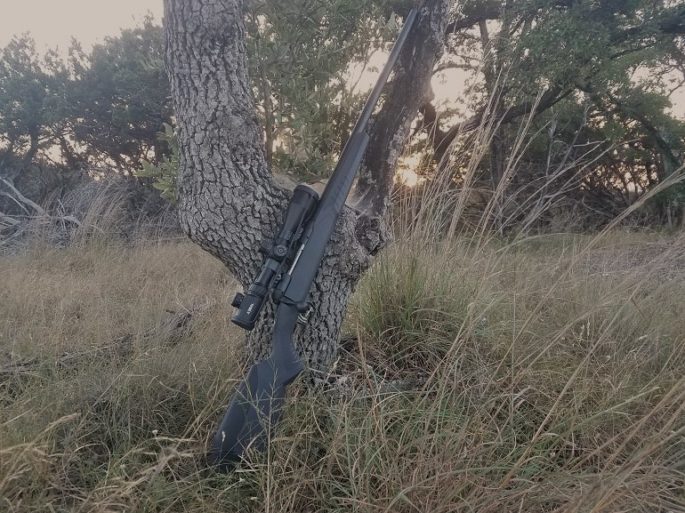
I’ve been a big fan of the Savage Model 110 for a long time. It’s been around for over 60 years and I’ve been recommending it for decades. They’ve always been accurate rifles that give the shooter a lot of rifle for their buck, especially when it comes to accuracy.
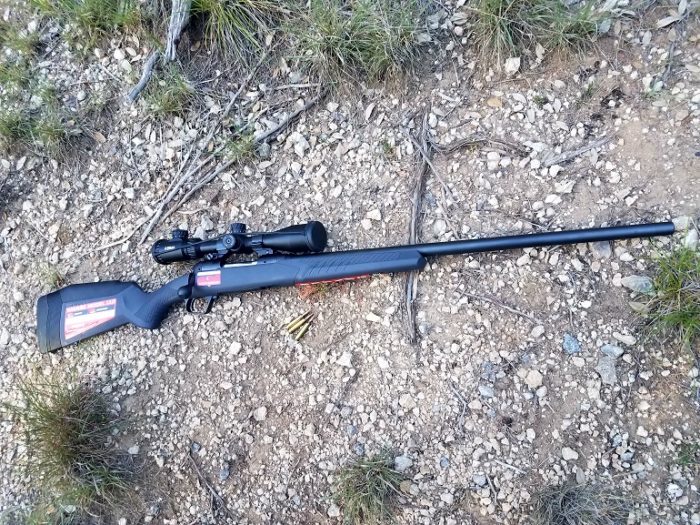
With the new Savage Model 110 Varmint in .223 Remington, Savage has attempted to build on that legacy with a heavy barrelled rifle designed to shoot tiny groups far away, and and do it at a low price point. That’s a tall order, as precision shooters aren’t really well known for being particularly forgiving on quality. And while I’ve always been partial to Savage rifles, what they came up with surprised even me.
The Model 110 Varmint is not a “do-it-all” gun. This is a purpose-built rifle for shooting prone or off a bench, usually from a fixed position. It’s not designed to be the rifle you carry all day and shoot once. It’s the rifle you carry very little, shoot at long distances, and shoot a lot.
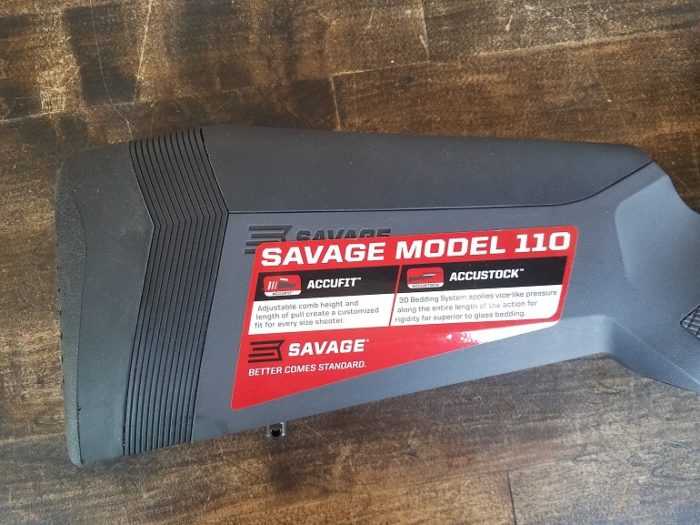
The Model 110 Varmint comes with Savage’s AccuFit system that allows you to change the length of pull as well as comb height right out of the box. This is an idea that’s become more common among budget rifle makers, and it’s very much appreciated. Within short distances on larger targets, or infrequent shooting, rifle fit doesn’t matter quite so much. But for anything else — for almost everything else — it makes a big difference.
Many folks have experienced what happens when a rifle or shotguns’ length of pull is too long, especially when a parent hands a long gun to their kid or a male shooter hands a rifle or shotgun to a smaller female shooter. The body is out of alignment, making it difficult to keep the rifle on target, and felt recoil is significantly in increased.
If a gun’s too small for a larger shooter, unless it is so short that eye relief become an issue, the main problem is that it’s just uncomfortable to lay behind in the prone position. That lack of good body position leads to fatigue, which directly relates to more difficult follow-up shots as well as the inability to manage the gun in recoil.
The Accufit system changes length of pull through a series of spacers between the stock and the recoil pad. Simply unscrew the two screws set deep into the recoil pad with a long Phillips head screwdriver and slide on or remove spacers until you get to the desired length of pull. Or as close as you can. Using the longest set that came with the Model 110 Varmint, I was still a bit short on my LOP, but I’m 6’2″ with very long arms.
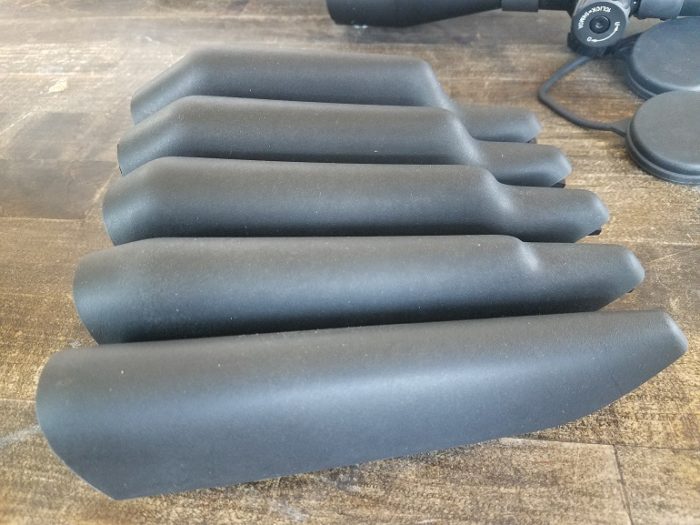
Comb height is another factor. If it’s too tall, you aren’t going to see through your sights. That’s not an issue if you’re a member of New York City’s finest, but for the rest of us, it’s a problem you’ll want to address. More often than not, however, the comb is too low for a good cheek-stock weld. By adding one of the five different combs included with the Model 110, the shooter can customize the comb to the appropriate height for whatever face/scope/mount combination you may be running.
Beyond just the obvious personal fit, I appreciate these systems because of the options they provide the young shooter. In olden days, to change the length of pull for a youngster, you’d cut off a wooden stock to fit, and then re-stock the same gun years later. That was a lot of years of the gun not quite fitting right as the child grew, as well as a waste of money and good stock wood.
Adjusting the comb height was always easier, but ugly. Shooters have been using a sponge wrapped in tape to customize comb height for decades. As your child tended to grow, you either changed the sponges or, more often than not, they just got crushed into shape over time anyway.
The AccuFit system allows you to appropriately size the rifle to a wide range of shooters progressively as they age so that it fits the shooter throughout their early years and into adulthood. It’s definitely a big bonus for parents considering a rifle for one of their children.
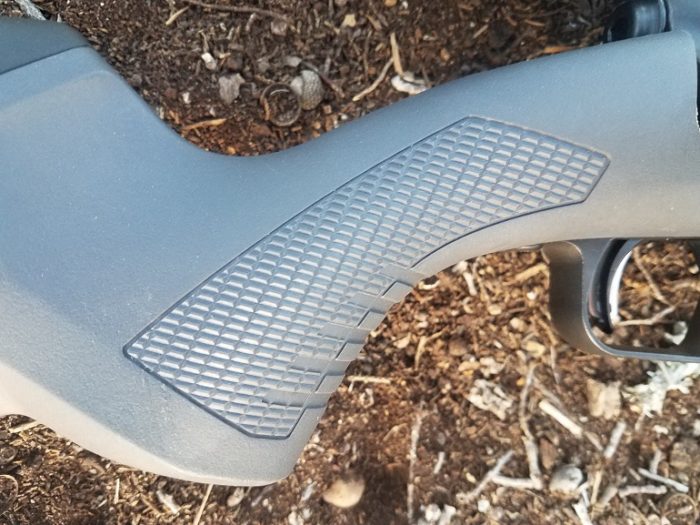
The outside of the stock itself is acceptable at this price point. The flat fore end, more reminiscent of the early Weatherbys, is the right idea for a heavier-barreled varmint gun. It’s easy to get it to rest securely on bags. There’s also some texturing on the palm swell, although shooting from the prone or off a rest, you probably won’t ever need it. If you’re gripping this gun hard, you’re doing it wrong.
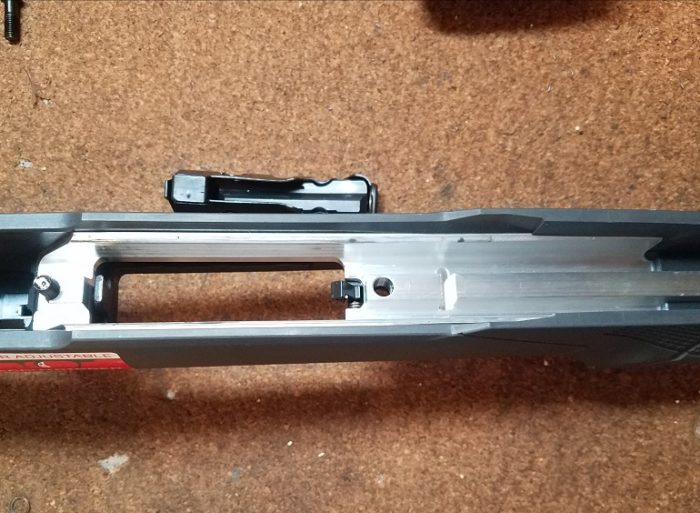
It’s what’s inside the stock, underneath the action and the recoil lug that matter. In this case, it’s a full-length aluminum bedding block. I gotta admit, for a gun at this price point, that was a surprise. I’ve become used to seeing metal inserts in these plastic stock for reinforcement, but not a full-on block.
My complaint on all of these budget guns is always that the plastic stocks are too weak for consistent shots in multiple positions over time. That’s not a valid complaint here, and including a block like this is a practice I sure hope more manufacturers of budget rifles follow.

As this is a rifle designed to be scoped, there are no iron sights. Savage has included scope bases.
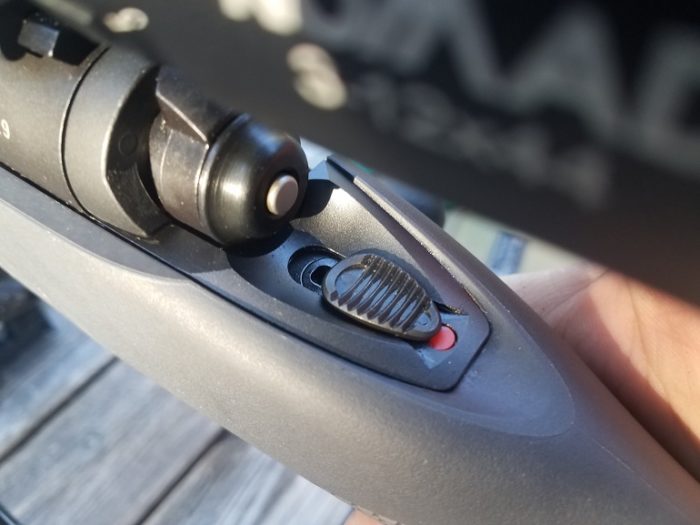
The safety is a tang-mounted three-position safety. Forward to fire, once notch back to lock the trigger (but not the bolt), and all the way back to lock the trigger and the bolt. The safety is a little sloppy, with no obvious catches between each setting. Finding that middle position was a bit of a challenge, and I ended up either in the fire or the bolt-locked position unless I was really paying attention and taking it slow.
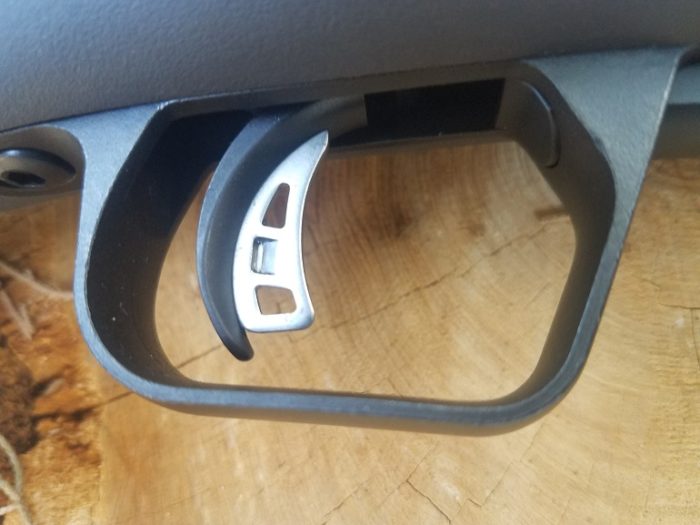
Triggers on rifles at this price range usually aren’t wonderful. The Savage Model 110 Varmint’s AccuTrigger is a great trigger. When you depress the “AccuRelease” (that little blade on the front of the trigger), its forward tip drops out of the way of the sear. Pulling the shoe itself then releases the sear for a short, crisp break with a lockup time advertised at 1.6 milliseconds. To put that in perspective, the Remington 700’s short action lockup time is about twice that.
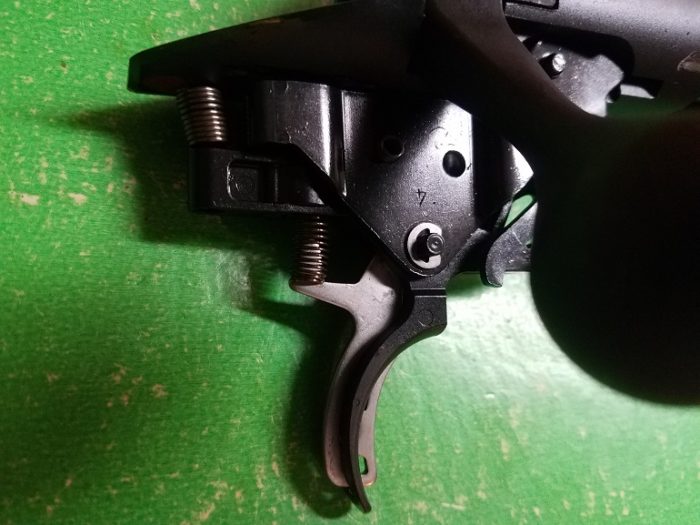
My trial and evaluation gun came from Savage with a trigger pull weight just under three pounds. Using the supplied tool, which looks like a tiny valve-stem remover, I took the pull weight down another pound to 1.8 lbs on my Lyman trigger scale. It’s advertised to go as low as 1.6 lbs safely. The whole process involved two screws to remove the action from the stock and a few turns with the supplied tool. Easy peasy.
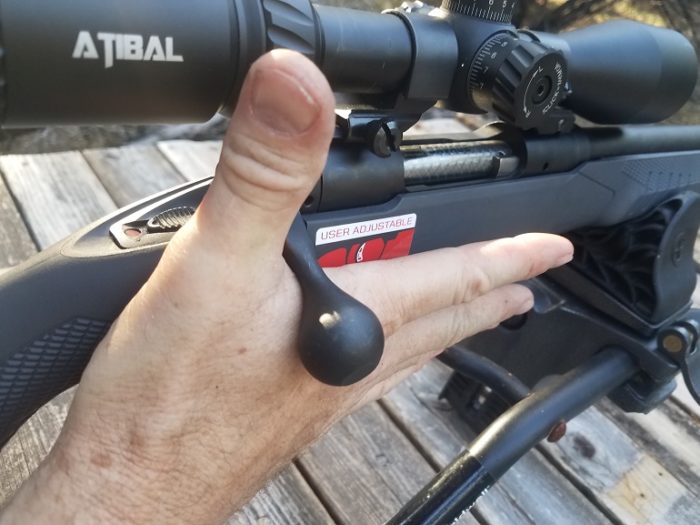
The Model 110 Varmint comes with an oversized bolt knob that hangs down low and a little away from the stock. If I was hunting in the brush, I’d be concerned that the bolt would too easily be caught in branches or vines. But that’s not what this rifle is designed for.
As it is, the bolt handle’s size and placement make it easy to slide my hand forward, catching the handle in the web between my thumb and forefinger to quickly cycle and chamber another round.
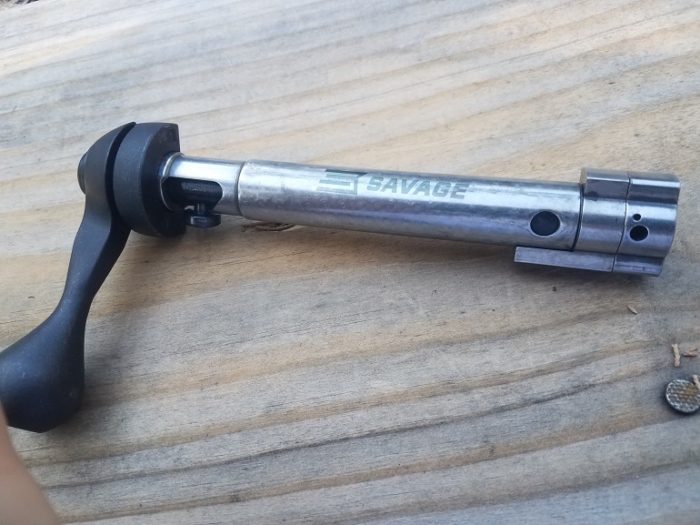
The action of the 110 is, by this time, surely a classic. After all, it’s the oldest continuously manufactured bolt action rifle in America, with few changes after the ones made back in 1966. The bolt, in this case, is jeweled. Kinda.
I appreciate the effort to class up a budget rifle, but the end result here is a bolt that looks like the jewling is worn and old, on a brand new rifle. I would have preferred the job either be done well, or not at all.
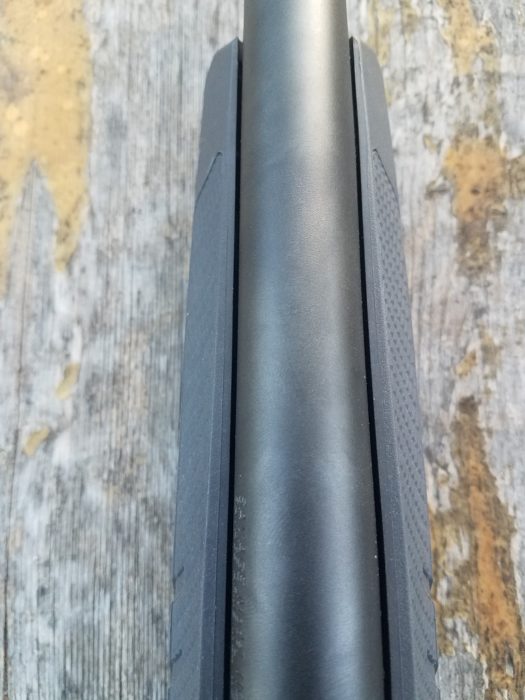
This isn’t a light rifle, and that’s mostly due to the 26-inch free-floated heavy barrel. That long tube is all carbon steel and button-rifled with a 1:9 twist. The extra barrel length really helps with 68+ grain rounds, imparting as much as 200fps more velocity over the same round shot from a 16″ carbine-length AR-15 barrel.
With the heavy barrel and light plastic stock, the gun is completely unbalanced and it would be unacceptable for a spot-and-stalk rifle. As it is, in a gun designed to make up the distance by shooting, not walking, it works just fine.
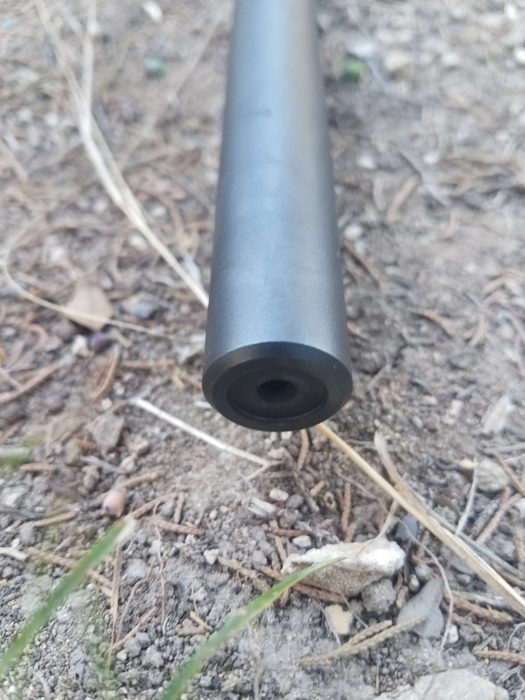
Unfortunately, and surprisingly, the muzzle isn’t threaded. Considering the calibers available and the application, I would have definitely wanted to put a direct thread suppressor on the end of the barrel. After all, the only thing better than shooting a coyote at 600 yards is shooting two coyotes at 600 yards.
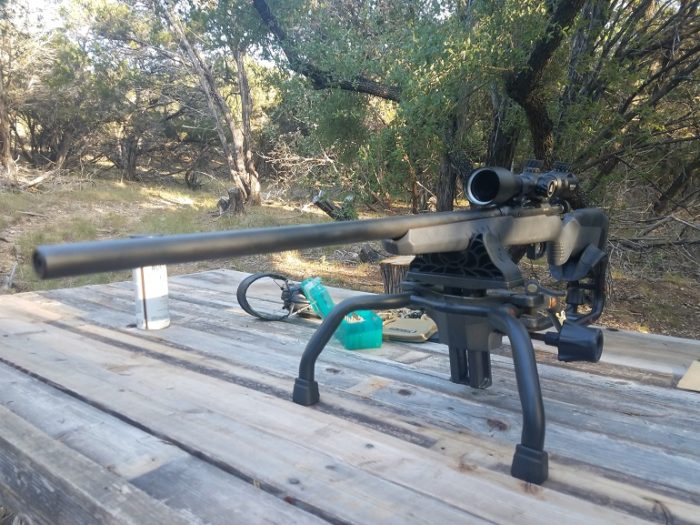
Given its weight and caliber, the Model 110 Varmint doesn’t recoil, it flinches. Barely. With that kind of stability, I could watch my round strike my target with ease. My eye never had to leave the scope, and my cheek-stock weld wasn’t disturbed. Considering the lack of recoil, and the AccuFit stock, this would be an ideal rifle for a young shooter.
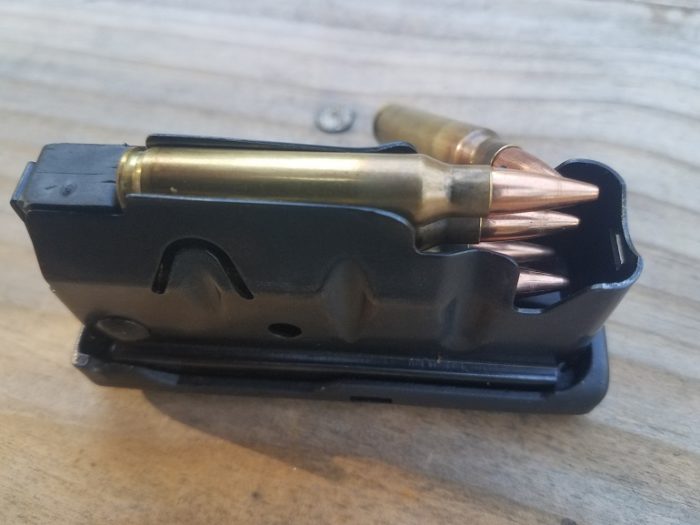
The Savage 110 Varmint sports a four-round detachable box magazine. It works just fine, and never failed to lock in place or to drop out when I needed it to. However, there were a few times I tried to chamber a new round only to find the bolt sliding on top of the next cartridge, without picking it up to load into the chamber.
When that happened, the cause was that I had failed to fully seat the magazine. It’s easy to do, as the magazine feels like it’s locked in, and won’t fall out, long before it is actually fully inserted into the gun. The usual cause was that the front of the magazine had not fully seated.
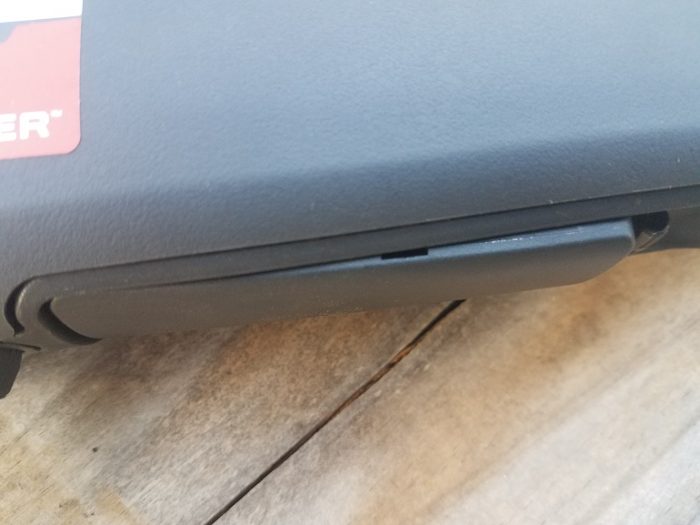
As long as I had fully seated the magazine correctly, I had no issues with reliably in any way. The gun never failed to fire when I pulled the trigger with any round. I used bullets from a 50 grains to 77 grains from several different manufacturers. I put 200 round through the rifle in total, and beyond the initial lube of the gun, I never performed any more maintenance once the shooting started.
Since I had lowered the trigger pull so much, I also decided to bounce the unloaded, but cocked rifle up and down on a stump a few times. The sear never released and the firing pin never fell.
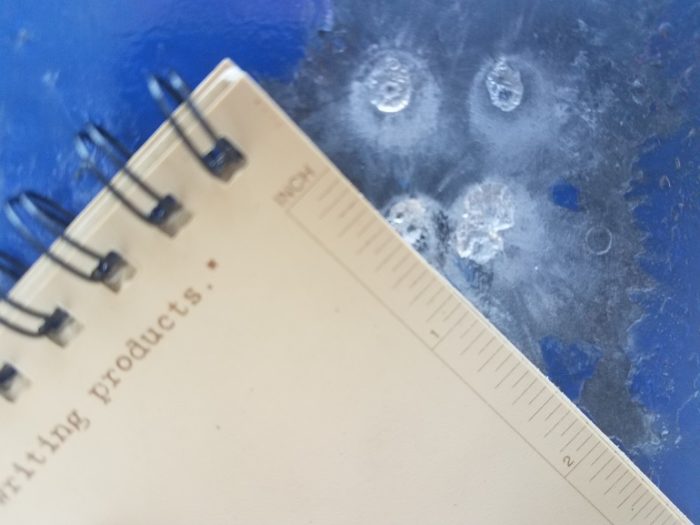
This is a varmint gun, ostensibly designed for target shooting as well as shooting pesky animals at relatively far distances. As such, it needs to be accurate. No commercial round I tried shot a five-round group larger than .9″ at 100 yards off a Caldwell Stinger Shooting rest.
Using an Atibal Nomad 4-12 optic, the best-shooting commercial round was, again, the IWI 77grain Sierra Match King round, printing an extremely consistent .7″ average five-shot group at 100 yards. My go-to White Tail Deer culling round, the Winchester 64gr Super X printed .75″ on average.
That means, given the rifle’s intended purpose, rabbits and rock chucks at 300 yards are no problem as long as you do your job and the wind is right. Coyotes at 600 should be child’s play. And that’s with factory ammunition. Get to the reloading bench and I have no doubt this rifle will print 1/2 MOA groups.

I’ve always been impressed with the Savage 110. In fact, when TTAG asked me for the three guns I’d recommend a couple of years ago, the Savage Model 110 series rifle was on my list.
When it comes to building good rifles at a low cost, Savage certainly hasn’t lost it’s touch. The purpose-built Savage 110 Varmint is a great all-around gun for target practice or small game hunting. It’s unfailingly reliable, accurate, and well-designed for its intended task. And it’s absolutely ideal for the parent looking to get their child their first centerfire rifle.
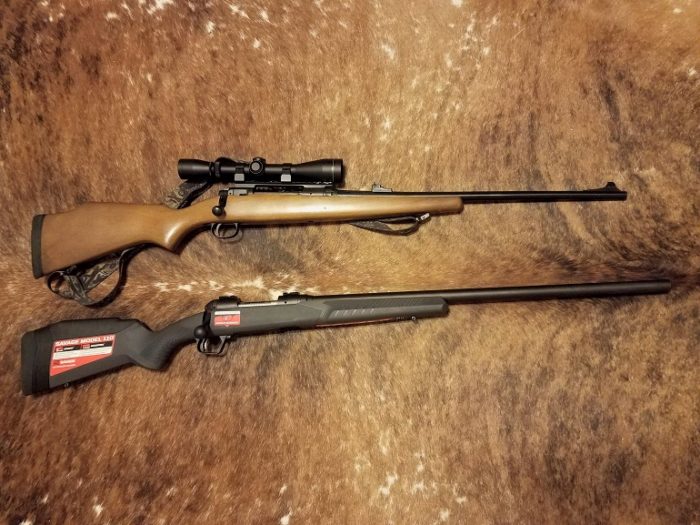
Specifications: Savage Model 110 Varmint
SKU: 57066
Caliber: .223 Remington
Magazine: 4 round Detachable Box
Barrel Material: Carbon Steel
Barrel Finnish: Matte Black
Barrel Length: 26″
Overall length: 46″
Weight: 9lbs
MSRP: $749 (easily found online for $570 and less)
Ratings (out of five stars):
Style and Appearance * * *
The synthetic stock is ugly, but all of them are ugly. The Accufit system, while utilitarian, makes the butt of the gun look segmented and ad-hoc, because it is. The matte black finish is simple and well done throughout. There are no tool marks or rough gouges anywhere on the gun, inside or out. If this were my gun, it would get it rattle-canned with a quickness.
Customization * * * *
This is a Savage 110, which means that barrel swaps and bolt head swaps are a breeze. The entire AccuFit system is about customization. Trigger adjustment is easy and it works. One star off for the lack of a threaded barrel, a mistake on this type of rifle.
Reliability * * * * *
If your hand or any other handy appendage works, so will this rifle.
Accuracy * * * *
A modern bolt gun needs to get below 1/2 MOA to earn five stars from me. As it is, this gun is at 3/4 of a minute with several different kinds of ammunition. That’s very good, but with the right pet load, it could really shine.
Overall * * * *
This gun isn’t pretty. At all. But it shoots pretty well. It’s ideal for a growing shooter, and it’s both inexpensive to buy and inexpensive to feed. Savage made a varmint rifle anybody can afford, and few will outshoot.
